Cervical osteochondrosis- This is a disease, which is the process of infringement or destruction of the cartilage of the intervertebral joints and the neck disc.
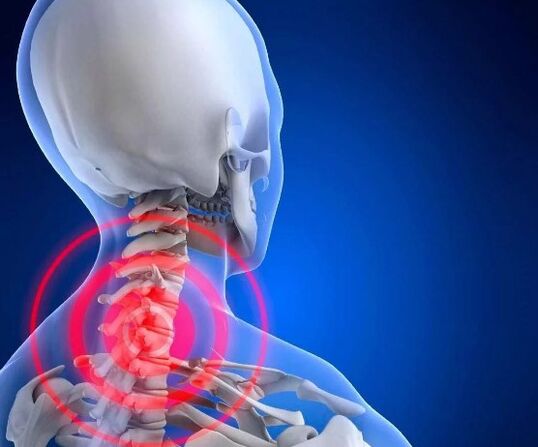
How to put your head on your shoulders easily?
If it is difficult for you to turn your head on when your name is on the road, if your neck is not literally holding the word and causing you to be sick, then it's time to check yourself for osteochondrosis.
It is the cervical part that is most likely to be injured, as it is the most portable and at the same time has a weak muscle corset. On small mobile vertebrae, the body creates a large load. And the spinal cord itself is quite narrow. It is easily squeezed on any pressure on it.
Thousands of people feel the severity of the head or tingling in their hands. And, not suspecting danger, they call such physiological manifestations with fatigue, and cold. Many blood vessels and nerve endings are concentrated in the neck. With osteochondrosis, the vertebral artery is squeezed, which gives the cerebellum nutrition, oval brain and the back of the brain. As a result, the coordination of a person's movement fails, loss of balance is possible, vision falls, hearing worse, and sometimes this phenomenon leads to stroke.
Fact. According to WHO statistics, people aged 30 to 40 have cervical osteochondrosis. Doctors describe this trend with a large decrease in physical activity. And the prevalence of the disease in industrial countries is equated by 60-80%.
Syndrome and symptoms of osteochondrosis
- Stenosis (spinal cord narrowing syndrome): Packing vessels -spinal cord of intervertebral disc hernia, osteophytes (bone tissue growth) or thick vertebral ligaments. As a result, blood circulation in the affected area is disrupted. One begins to feel controlled, feeling significant pain in the cervical spine. At the top and bottom, numbness and tingling are found
- Rook Syndrome: squeeze the intertebral nerve root. This leads to headaches expressed in pain, burning or pulsing impulses, sometimes the sensation is similar to the symptoms of hypertension. In this syndrome, speech defects and odors, facial muscle hypertrophy, damage to linguistic muscle sensitivity, "clogged" throat with lumps can occur. Breathing is a disturbance, a person suffering from snoring, he often, he will look unreasonable, "put" his nose.
- Vail arterial syndrome: It is formed during compression (compression) of the vertebral artery. The main satellite is a pulsating pain. Attacks can capture parietal parts, areas above eyebrows, temporal and occipital stocks.
- Cardial Syndrome:It resembles an angina pectoris attack, but their period is much larger. The pain is reflected in the diaphragm. In some individuals, this phenomenon is accompanied by increased blood pressure, arrhythmia.
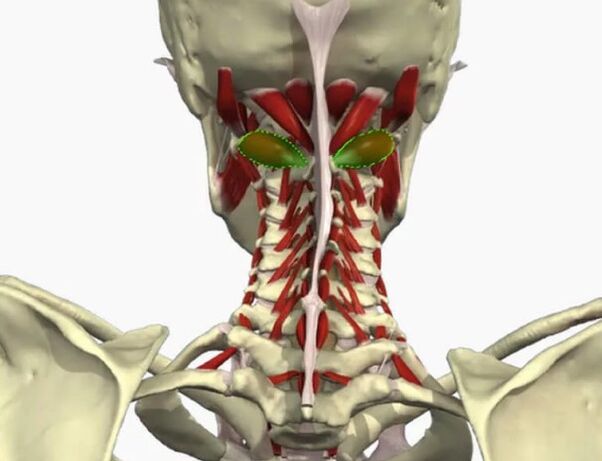
The main cause of the development of the disease
- Damage to metabolism;
- Lifestyle with low motor activity;
- Descent tendency;
- Age -related ossification;
- Muscle clamps, as a result of posture changes;
- Fluid deficiency and vitamins in the daily diet;
- Staying long in an uncomfortable position that increases the pressure on the disc and the spine;
- Excess weight or load to the spine due to heel wearing;
- All types of spinal injuries sent;
- Regular weight loss;
- Autoimmune disease (the process of destruction of the immune system), leading to deterioration of cartilage tissue;
- Pressure, leading to muscle cramps and infringement of blood flow to the intervertebral disc;
- Hypothermia.
Diagnosis of cervical osteochondrosis
The initial diagnosis of "osteochondrosis of the cervix-thoracic department" or only the cervical department can make the doctor already during the patient's initial examination. The specialist will determine:
- One's body type;
- Posture;
- Spinous process line;
- Cervical lateral contour and angle of shoulder blade location;
- Localization of pain points and levels of pain;
- Amplitude of spinal flexibility
- Muscle release.
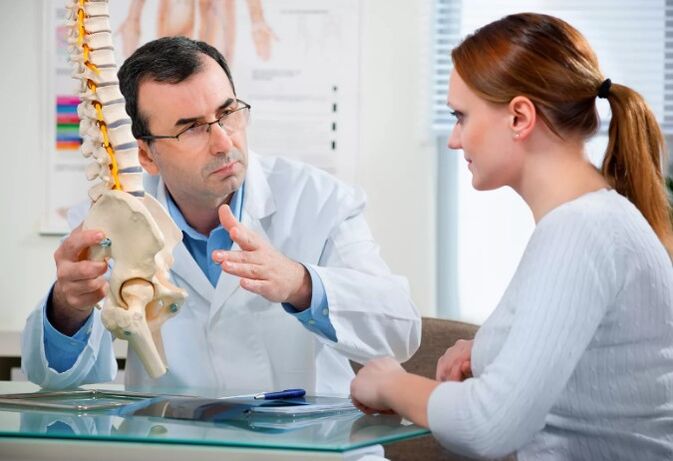
All of these together -will tell you exactly how the disease flows. Next, the doctor will send some exams:
- Digital radiography;
- CT (computed tomography);
- MRI (magnetic resonance imaging);
- Dopplerography of the main artery ultrasound of the brain: a special ultrasonic sensor determines the state of blood flow and blood vessel walls.
Treatment methodology for cervical spinal osteochondrosis
Doctors will help choose the most optimal solution to this problem. And he will offer a variety of treatment methods: medicines in combination with physiotherapy or prescribe operations that block your body.
Conservative treatment- This is, first of all, drug therapy. He relieves pain, relieves muscle tension and extinguishes inflammation. For such purposes, anti -anti -nonsteroids (NSAIDs) and analgesics are prescribed. Chondroproprotectors also fall into the list of recipes to activate the recovery process in the cartilage of joints, as well as vitamin B and external drugs: gels and ointments containing NSAIDs.
Physiotherapy, in turn, penetrating the medium of the cartilage of the cartilage of the intervertebral disc and contributes to the production of cartilage. Doctors will also write exercises for therapeutic gymnastics - to strengthen the muscle corset and develop the flexibility of ligaments. You can conduct an introductory lesson with you so you will practice properly.
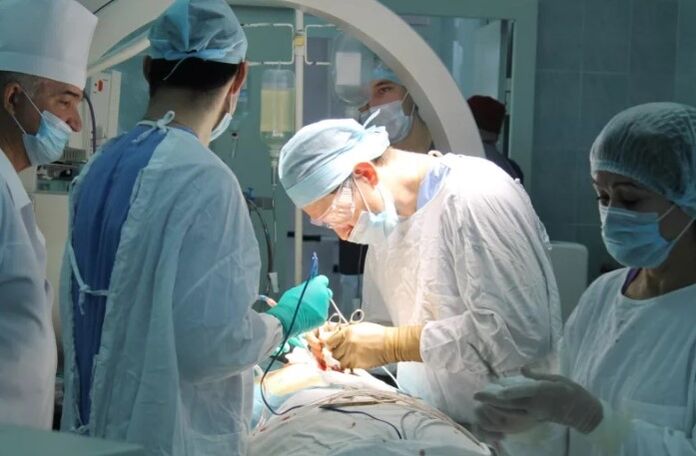
SurgicalIt is suitable if the drug and physical effects cannot be released. It turns to it if the patient has a narrow spinal cord. Operating intervention is called anterior cervical diskoctomy. The surgeon launches the affected spinal segment and removes intervertebral hernia, which suppresses the spinal cord. Over time, the vertebra, where the disc is removed, is fed. This is called spondylodesis. For more of them, experts can operate with cage stabilization - that is, the intervertebral space is filled with artificial inserts.
After 3-5 days, the operated is prescribed from the hospital for outpatient treatment. Recovery takes about 3 months and depends on implant and professional activities established by patients.
What is the best way to build a human lifestyle with the diagnosis of neck osteochondrosis?
Daily routines should include compulsory roads, while jumping and walking is better to avoid. It is contraindicated for a long time to spend time in sitting, swimming use - it not only strengthens muscle tone, but also relieves cramps that prevents the body. In the evening, it will not be excessive for hot water baths (except for the duration of the cervical region treatment during the hunting of the disease). It is important to follow a diet. Use saturated products with magnesium and calcium - nuts, dairy and seafood, legumes. We need to leave alcohol.
Is it possible to visit the sauna during enlargement of osteochondrosis?
Heating usually benefits the patient, but after increasing praise, you should refuse to dive into cold water. You can't run out of frost. Otherwise, the severity of the disease will occur. Cervical osteochondrosis is sensitive to any temperature difference, including climate. For example, autumn cooling can affect one's well -being.
What complications can arise after osteochondrosis of the cervical area?
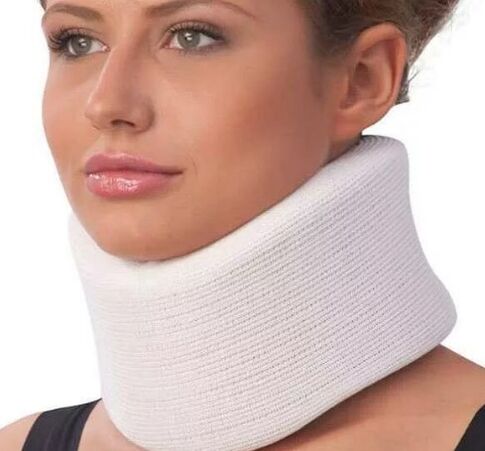
If in time, when the first signs of the disease appear, not to start treatment, the neck can stop obeying you in the literal sense. And the complications of the disease are quite serious. There is a risk of highlights - a "protrusion" coordinated by the intervertebral disc outside the spine, which can then obtain a hernia form. The nerve root of the neck can be injured. Or osteophytes (bone growth in the vertebra) will appear. These words often weaken the muscles or paresis - the condition when the head begins to hang to the side or forward. In this department, in the process of cervical vertebrae, the vertebral artery that feeds the brain with blood is located. This infringement of blood circulation is one of the most serious phenomena. Refusal to be treated can cause neuralgia, deafness and even loss of vision. But if you deal with the solution of the issue even in the early stages of its development, then the disease can be prevented.
Why do you need chantsis collar?
It is an orthopedic latch made of flexible material, which is used to disable the neck in the treatment of cervical osteochondrosis. But it is impossible to use such a device to fix the neck for a long time, as the muscles can weaken over time, and you will get used to deliberately tilt your head to the side without additional support. Chansa's reset does not allow the vertebra to move and maintain the correction effect after the massage session. He took over the head and distributed it to the collarbone and the base of the neck. At the same time, the head remains in the right position.


























